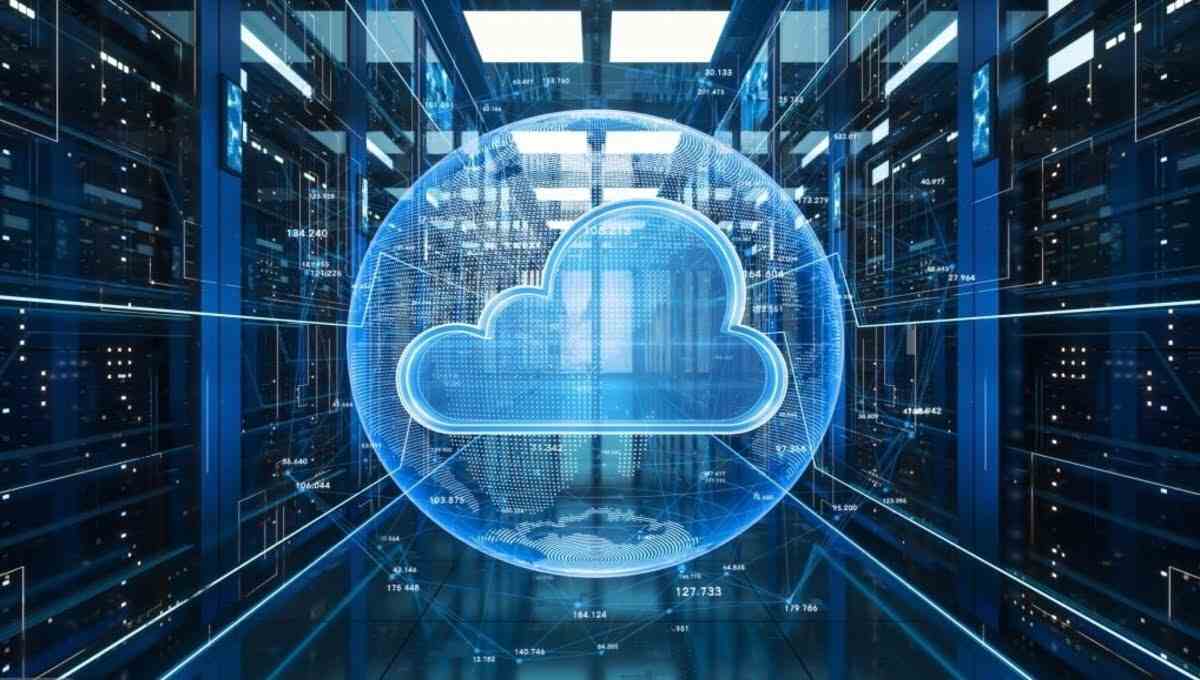FUNDAMENTAL
History of cloud computing

cloud computing has become an integral part of our daily lives. From storing files to running complex applications, the cloud has revolutionized the way we interact with technology. But have you ever wondered about the origins of this game-changing technology? In this article, we’ll take you on a journey through the history of cloud computing, exploring its evolution and impact on the modern world.
Introduction to Cloud Computing
Cloud computing, in its simplest form, is the delivery of various services and resources over the internet. These services include servers, storage, databases, networking, software, and more. Users can access and utilize these resources on a pay-as-you-go basis, eliminating the need for large, on-premises infrastructure. The concept might seem modern, but its roots trace back to earlier technological advancements.
The history of cloud computing can be traced back to the 1960s, when the concept of time-sharing was first developed. Time-sharing allowed multiple users to share a single mainframe computer, which was a major breakthrough at the time.
In the 1970s, the development of the Internet led to the rise of client-server computing. In this model, the client computer (such as a desktop or laptop) is responsible for displaying the user interface and interacting with the user, while the server computer (such as a mainframe or server) is responsible for storing data and processing requests.
In the 1990s, the development of virtualization technology made it possible to divide a single physical server into multiple virtual servers. This allowed businesses to more efficiently use their IT resources.
The term “cloud computing” was first coined in the early 2000s. Cloud computing refers to the delivery of computing services—such as servers, storage, databases, networking, software, analytics, and intelligence—over the Internet (the cloud) rather than on-premises.
The first major cloud computing service was Amazon Web Services (AWS), which was launched in 2006. AWS quickly became the leading cloud computing platform, and it is still the most popular today.
Other major cloud computing providers include Microsoft Azure, Google Cloud Platform, and IBM Cloud. These providers offer a wide range of cloud services, including compute, storage, networking, databases, analytics, machine learning, and artificial intelligence.
Here are some of the key milestones in the history of cloud computing:
- 1960s: The concept of time-sharing is developed.
- 1970s: The Internet is invented.
- 1990s: Virtualization technology is developed.
- 2000s: The term “cloud computing” is coined.
- 2006: Amazon Web Services (AWS) is launched.
- 2008: Salesforce.com introduces its cloud-based customer relationship management (CRM) software.
- 2009: Microsoft Azure and Google Cloud Platform are launched.
- 2010: IBM Cloud is launched.
- 2011: The OpenStack cloud computing platform is released.
- 2012: The first public cloud gaming service is launched.
- 2013: The first cloud-based artificial intelligence (AI) platform is launched.
- 2014: The first cloud-based blockchain platform is launched.
- 2015: The first cloud-based quantum computing platform is launched.
- 2016: The first cloud-based self-driving car is developed.
- 2017: The first cloud-based augmented reality (AR) platform is launched.
- 2018: The first cloud-based virtual reality (VR) platform is launched.
- 2019: The first cloud-based 5G network is launched.
- 2020: The COVID-19 pandemic accelerates the adoption of cloud computing.
The Evolution of Cloud Computing
The evolution of cloud computing can be divided into three main phases:
- The early days (1960s–1990s): This phase was characterized by the development of time-sharing services and virtualization technology.
- The rise of cloud computing (2000s–2010s): This phase saw the launch of the first commercial cloud computing services and the rapid growth of the cloud computing market.
- The era of hybrid clouds (2020s–present): This phase is characterized by the increasing adoption of hybrid cloud solutions, which combine public cloud and private cloud services.
The Future of Cloud Computing
The future of cloud computing is bright. The cloud is expected to continue to grow in popularity as businesses and individuals increasingly adopt cloud-based services.
Some of the key trends that are expected to drive the growth of cloud computing in the future include:
- The increasing adoption of mobile devices: cloud computing is well-suited for mobile devices, as it allows users to access their data and applications from anywhere.
- The growth of big data: Cloud computing can be used to store and process large amounts of data, which is essential for big data analytics.
- The rise of artificial intelligence and machine learning: cloud computing can be used to train and deploy artificial intelligence and machine learning models.
Overall, the cloud is a powerful platform that has the potential to revolutionize the way we live and work. The future of cloud computing is bright, and it is sure to play a major role in the development of new technologies and applications.
Benefits of Cloud Computing
Cloud computing offers a number of benefits over traditional on-premises computing, including:
- Cost savings: Cloud computing can help businesses save money on hardware, software, and IT staff.
- Scalability: Cloud computing is scalable, so businesses can easily add or remove resources as needed.
- Reliability: Cloud computing providers offer high availability and disaster recovery services.
- Security: Cloud computing providers offer a variety of security features to protect data.
- Flexibility: Cloud computing allows businesses to access their data and applications from anywhere.
Conclusion
The history of cloud computing is a tale of innovation, adaptability, and transformation. From its humble beginnings to its current ubiquity, the cloud has reshaped how we live and work. As technology continues to advance, the cloud will undoubtedly play an even more significant role in our digital future.
FAQs
What is the difference between cloud computing and traditional computing?
Cloud computing relies on remote servers and the internet to deliver services, while traditional computing relies on local hardware and software.
How does cloud computing benefit small businesses?
Cloud computing reduces infrastructure costs and provides scalable solutions, making it accessible and cost-effective for small businesses.
How does cloud computing benefit small businesses?
Cloud computing reduces infrastructure costs and provides scalable solutions, making it accessible and cost-effective for small businesses.
What is edge computing, and how does it relate to the cloud?
Edge computing involves processing data closer to the source, while the cloud centralizes data processing. They can complement each other in specific use cases.
How does the cloud support remote work and collaboration?
The cloud enables remote access to files and applications, fostering collaboration and allowing employees to work from anywhere with an internet connection.

 FUNDAMENTAL2 months ago
FUNDAMENTAL2 months agoHow Cloud Computing Improving Customer Service Processes

 FUNDAMENTAL7 months ago
FUNDAMENTAL7 months agoWhat is cloud computing? A Comprehensive Guide

 FUNDAMENTAL4 months ago
FUNDAMENTAL4 months agoHow can Cloud Technology Help Small Businesses ?

 FUNDAMENTAL7 months ago
FUNDAMENTAL7 months agoEvolution of Cloud Computing : A Well-Explained

 CLOUD COMPUTING2 months ago
CLOUD COMPUTING2 months agoWhat Is VlAN and VSAN In Cloud Computing?

 FUNDAMENTAL2 months ago
FUNDAMENTAL2 months agoIaaS PaaS and SaaS in cloud computing

 FUNDAMENTAL2 months ago
FUNDAMENTAL2 months agoWhich is a fundamental attribute of cloud computing?

 CLOUD COMPUTING2 months ago
CLOUD COMPUTING2 months agoHow to Make Your Own Cloud Storage : A Step-by-Step Guide









